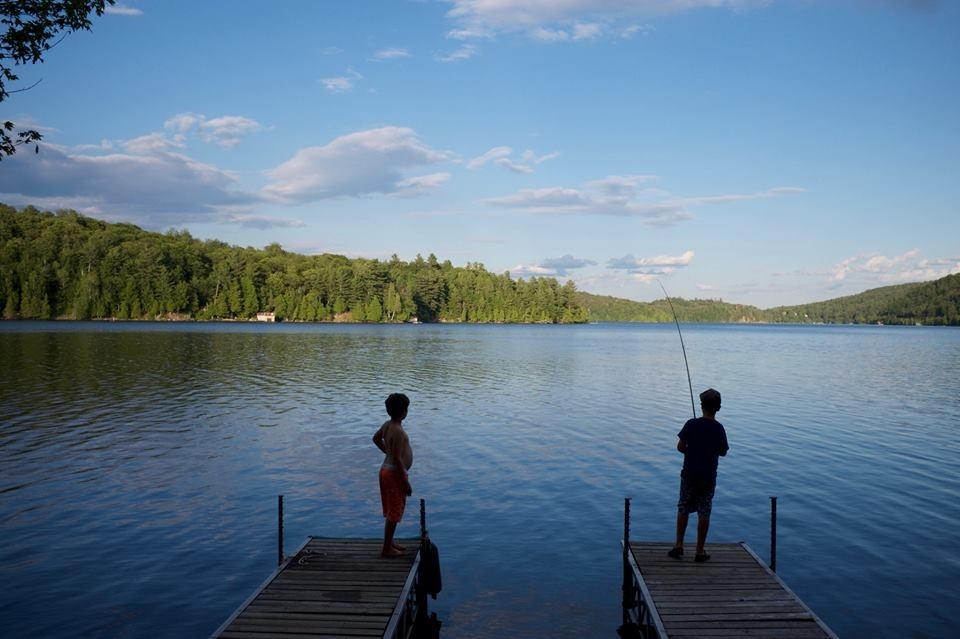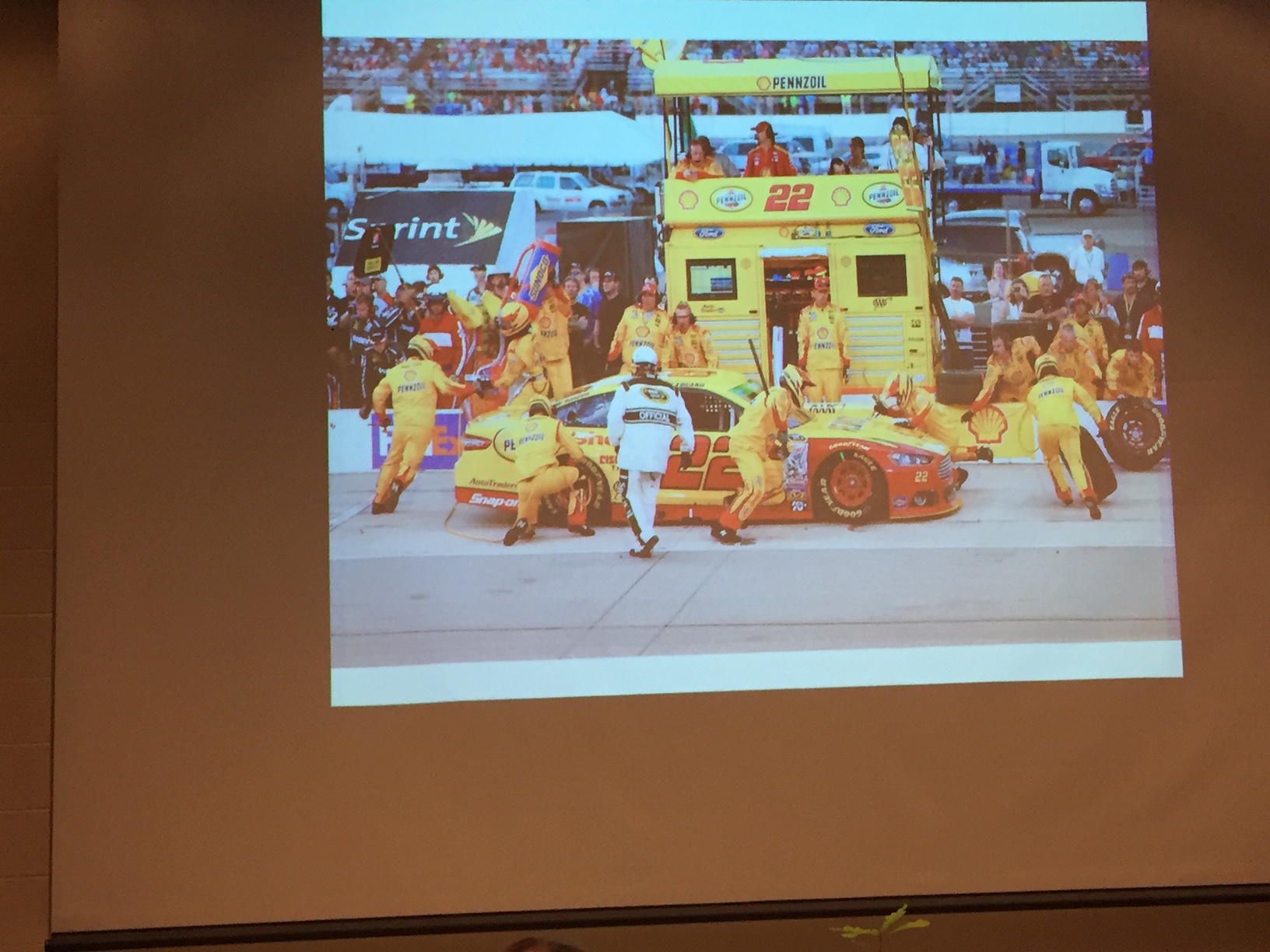
My writings - and those of others.
50 Simple Ways
The Guardian features suggestions from experts for things we can do in our daily lives to improve life for the planet. You can find them here
Climate Change - the Facts
When you have to substantiate climate change, it’s good to have updated sources of information. These are some of the ones recently cited by the New York Times as reliable and current:
Skeptical Science lists 197 common myths and provides refutations of them
NASA’s Global Science Page cites many information points and is frequently updated
The Climate Reality Project provides a document with the 12 most common questions that you are likely to here and you can download it here.
If you like podcasts, you can find some brief ones on several topics from MIT here
And here;s a video that includes a few minutes of the arguments with rebuttals.that are entertaining as well as informative.
A Summer of Batesons
It started with an email from University of Toronto’s McLuhan Centre. A conference had issued an open invitation to attend a movie entitled An Ecology of Mind by Nora Bateson. The filmmaker would be present.
An Ecology of Mind is a beautiful tribute by Nora to her father, Gregory Bateson, a noted anthropologist, philosopher, author, naturalist, systems theorist and film maker himself. Though I knew his name as a husband of Margaret Mead, I knew very little else about him. Gregory was born in 1904 and his youngest daughter was born in 1968, 12 years before his death in 1980. Nora Bateson has spent much of her own life getting to know the work and influence of her father through his own films, writings and lectures, and the people he has influenced. The resulting film, as well as being loving, is both informative and inspiring.
Many of those he has influenced and depicted in the film were familiar to me – among them, Fritjof Capra, Stewart Brand, Jerry Brown – as well as his other daughter, Mary Catherine Bateson. Intensely curious, he delved into many fields and became one of the leading proponents of systems thinking. In an age of experts, he remained a generalist and if anything was overly modest in expressing his originality. He understood and championed the move from seeing the world as a machine to that of a relational network. Many common expressions - the double bind, connecting the dots, the map is not the territory the difference that makes a difference – are ones we owe to Bateson.
The substance of the film is significant in terms of Bateson’s teaching – he wrote a book with that title - and I will deal with it at more length later. He was an early advocate that all living systems have minds whether conscious or not – using “mind” as the signifier of layers of relationships that surround us like concentric circles and make us less like individuals and more like participants in levels of culture and meaning. Cosmology and deep history came naturally to him.
As a memoir, the film is charming – rich with insights from Bateson himself in numerous film clips, both with his young daughter and as a lecturer using examples from Through the Looking Glass in a delightful way. The last scene shows Bateson instructing small Nora on the importance of climbing an extra mile to reach the heights and telling her he told her that first. She replied quite forcefully for a small girl, “But I thought it first”. “All right”, her father said, contentedly. The film is also an excellent summation of his work. Sections of it can be accessed online and it is still available for purchase.
Watching the film made me realize that I knew her older sister, Mary Catherine Bateson as a writer of a favorite book on my shelf for years, and it was a good time to re-read it. It is called Peripheral Visons, Learning along the Way. As the daughter of Bateson and Margaret Mead, it is no surprise that Mary Catherine Bateson also became an anthropologist and this book is based on her experiences of several different countries and their cultures.
She is an excellent storyteller. In an early chapter we meet her in Iran heading with her two and a half year old daughter to witness a ceremonial sacrifice of a sheep, a ritual with roots in several religious traditions. She calmly explains what is going on to her young daughter as the gardener lays out the sheep’s internal organs, with an awareness that children take their emotional lead from a parent, no matter how bizarre a different cultural ritual might seem – and notes that the local children take it in as a totally normal event. Later in the book she explores the different ways that babies behave depending on their cultures by contrasting visits to a classroom by mothers and babies from America and Iran. Still later we hear of experiences on a writing fellowship at the MacDowell Colony in New England as well as her time in the Philippines. As a writer, Mary Catherine Bateson is thoughtful and filled with humanity; any reader is bound to learn from her. I’ve enjoyed her other books too.
Back to Gregory. I am much indebted to Noel Charlton’s book, Understanding Gregory Bateson, Mind, Beauty and the Sacred Earth, a splendid biography and study of the Bateson’s life, teaching and works. Charlton notes at the beginning of the book that he will cover Bateson’s what – to recover the grace of realizing our interrelated membership of the community of living organisms on the planet, as well as his how – the personal relationship with the more than rational processes of both the natural world and human art – poetry, painting, dance, music, humor, metaphor, the best of religion and natural history”. At the end of his life Bateson was prepared to call both nature and the arts inspired by them ‘the sacred”. He saw the devastation of the planet and its effect long before his death and noted that the human capacity to be responsive also meant that we must be responsible.
Bateson claimed to belong to four generations of atheists, but he grew up in a home where the Bible was read daily at breakfast. His grandfather and father were both scientists and like his father, he was a life-long admirer of the poets, William Blake and Samuel Butler. The loss of his older brothers, one in World War I and the other by suicide, placed much expectation on the surviving son. He started in zoology but quickly switched to anthropology and traveled to Samoa where he met and later married anthropologist Margaret Mead. Their marriage produced another one, Mary Catherine Bateson, who collaborated with her father at the end of his life.
Early in his career Bateson realized the limitations of specialization – knowing more and more about less and less. He was a key figure in the founding and development of the Macy Conferences that facilitated informal interdisciplinary exchange. Leading scientists from many fields and their collaboration ultimately resulted in the new field of cybernetics, systems that included biological, social, political, financial, mental, communication and engineering ones. For Bateson, this led to a later shift of interest to psychology and clinical psychiatry. His “double bind” theory of schizophrenia was largely rejected at the time, but led later to family systems theory, and contributed to other fields of study such as addiction, play theory, international relations and environmental studies.
Steps to an Ecology of Mind was written in 1972 followed by Mind and Nature in 1979. Both remind us of the need to rethink accustomed patterns of belief that are part of our heritage. He particularly questioned the notion of individualism and the sense of autonomy in western culture. We think our individual perspectives are unique and that we are separate from the things that we observe. We also think that we are rational beings and that progress is linear; both views are reinforced by our capitalistic system and by technology. In contrast, Bateson sees individuals as part of systems whose boundaries are not limited by their body or skin. What counts instead are the relationships between and among things. Our use of language causes us to abstract ourselves from the systems of which we are part and we tend to define ourselves by bits of information – a social insurance number, a job title, a student grade, a salary. We ignore the reality that we are part of a larger system upon which we are also totally dependent – the air we breathe, including the chemicals in the atmosphere, the genetically-modified food we eat, the water or other liquids we imbibe.
Many of our patterns of thinking have roots in stories and myths of the past and these are carried forward in our use of language. We name the things omitting the spaces between them, which also makes us think that we can measure and separate anything. While this way of thinking has been beneficial to the development of science and technology, it is not the whole story. It is especially problematic in our relationship to nature. Words like map and territory are metaphors for larger systems. We take for granted that a growing economy is a good thing and fail to recognize that at the same time the growth is polluting the atmosphere; the difference makes a difference that we fail to observe. We are similarly unaware when a non-native tree planted in a ravine affects the insects, and bees and birds no longer have food to eat. The difference that makes a difference happens in both space and time. We need to assess our metaphors to limit our effect on the surrounding environment.
We take it for granted that we know how to interpret reality, but Bateson stresses how much we are influenced by the cultural narratives that precede us. These, he says, must be constantly rethought and re-evaluated and we need to examine the wider context of relationships, interaction and interdependence. He credits natural systems with intelligence since these often can self-correct. In contrast, we use ideas from the past – that wilderness is dangerous and must be tamed, that oceans are vast and we can throw our waste in them, that indigenous people are uneducated and must learn our ways. We can destroy nature but we can’t create it. In 1972, he wrote.
“The environment will seem to be yours to exploit. Your survival unit will be you and your folks or conspecifics against the environment of other social units, other races, and the brutes and vegetables. If this is your estimate of your relation to nature and you have an advanced technology, your likelihood of survival will be that of a snowball in hell.”
Bateson’s response was the need to learn - and he divided learning into several classes. What he terms zero learning means that we show no response to an item of sensory input. At a first level of learning, we notice that the context has changed. “No one can enter the same river more than once”, his daughter Mary Catherine observes in her sister’s film. Bateson himself is even more witty observing, “No man can go to bed with the same girl for the first time twice”. We are aware of new information in a new way and the context changes completely. Charlton has a further example of how we understand context, by noting that when we witness a murder in a play on a stage, we don’t rush to the phone and call the police.
Stage two learning is described as focusing on the learning experience itself – learning to learn. Stage three is more difficult and means a rethinking of our sets of assumptions or world view. We shift our character and even rethink our cosmology where we undertake a profound reorganization of the way we think. Stage four is akin to evolution itself and is beyond human capability to do more than glimpse occasionally. All evolution for Bateson can be described as possessing a mental process, an intelligence within. Our response to this is identified by Bateson as the sacred and he sees it also in the aesthetic process. We are part of nested systems of energy and beauty. The literal and the metaphorical are not “either/or” but “both and”.
C. A. Bowers also has a good summary of Bateson’s key directives for learning:
• Awareness of how we are influenced by earlier patterns of thinking and the need to become conscious of them.
• Knowledge and awareness of cultural patterns and systems other than our own
• The need to see ourselves as part of natural systems, neither separate from them nor superior to them
Bateson’s ideas resonate in certain ways with those of Thomas Berry, Joanna Macy, James Lovelock, Matthew Fox and Vandana Shiva. He was more of a thinker than an activist. Noel Charlton notes that even two decades ago there were many organizations working for change in our attitudes toward environmental issues, but there is still a need to go further. He urges us to take action in spreading the ecological message and envisions groups of eight to ten friends meeting regularly for as long as a year, spending time on research and reflection to increase awareness and response. At the end of this period, the group needs to split up into pairs and start new study groups, while also staying anchored in the original one for personal support – a model akin to the early spread of Christianity. In so doing, we can follow the writings and ideas of Gregory Bateson and his daughters who point the way.
Resources:
Bateson, Gregory. Steps to an Ecology of Mind, Collected Essays in Anthropology, Psychiatry, Evolution and Epistemology. Chicago: University of Chicago Press, 1972.
Bateson, Mary Catherine. Composing a Life.. New York: Grove Press, 1989
Bateson, Mary Catherine. Peripheral Visions - Learning Along the Way. New York: Harper Collins, 1994..
Bateson, Nora. An Ecology of Mind, A Daughter’s Portrait of Gregory Bateson. http://www.anecologyofmind.com
Bowers, C. A. Perspectives and Ideas of Gregory Bateson, Ecological Intelligence and Educational Rreforms. Eugene: Eco-Justice Press, 2011.
Charlton, Noel. Understanding Gregory Bateson, Mind Beauty and the Sacred Earth. Albany: State University of New York Press, 2008.
The love of Bees
We are becoming more and more aware that we are part of an ecological system - and bees have figured broadly in home and institutitonal gardens this summer. you can read about some efforts here.
Re-Wilding
Those of us who live near ravines in Toronto are blessed with an escape into a natural world on the edge of office and residential towers. As part of the recent University of Toronto’s alumni weekend, a lecture advertised as “Stress -Free” and entitled Re-Wilding Toronto, The Billion Dollar Dream - was an obvious choice.
The public lecture was filled with a wealth of information and excellent slides - some of which I couldn’y resist snapping and sharing here. Eric Davis is currently a PhD candidate, but he brings a wealth of work experience and a passion for restoration.
We learned that the Toronto Ravines are one of the world’s largest ecosystems, that cover 27,000 acres or one fifth of the city.
What an uninformed public does not know is that after years of neglect the ravine system is on the verge of collapse:
Eric Davis is a gifted instructor and used good analogies throughout. His points are illustrated in the mini-slide show below.
He started by showing us that trees are part of a system of biodiversity on which an entire ecosystem depends to produce a number of services on which other forms of life - including ourselves - depend. The intricacy of the system can be compared to a racing car - in which the importance of the most minute parts will determine the success of the race - a comparison that another forester named the rivet hypothesis. When the Nascar race happens, the integrity of the parts is crucial and the emergency repair team is on it with repairs in seconds. We need a comparable repair pattern for the trees in our ravines.
What has happened is the ravines have become invaded by non native trees- brought in by the owners of adjacent properties over the past decades - and the percentages of these are growing.
A study of the Rosedale Ravine 40 years ago has provided a baseline to study the changes:
The time lapse shows the urgency of the need for change. But unlike too many of the studies that we read about, Eric Davies has some clear solutions. The summary of the study can be read here and includes the following:
A Tree inventory has been completed
Other inventories are not under way - both native and non-native vegetation, mammals, birds and insects
Citizens are becoming involved in local studies and inventories
Schools and households are encouraged to collect, plant and grow local plants and trees to prepare for reforestation.
Perhaps the most important answer came from a response when a questioner wondered why we aren’t planting for a future client change. The answer - trees have been adapting to changing conditions for thoustands of years. We can probably trust them to do so - and do what we can to help them flourish.
And the billion dollar price page? A cathedral generated two billion in one day for restoration. Perhaps it is time to get our priorities right when we compare the importance of an ecosystem to our future.



















